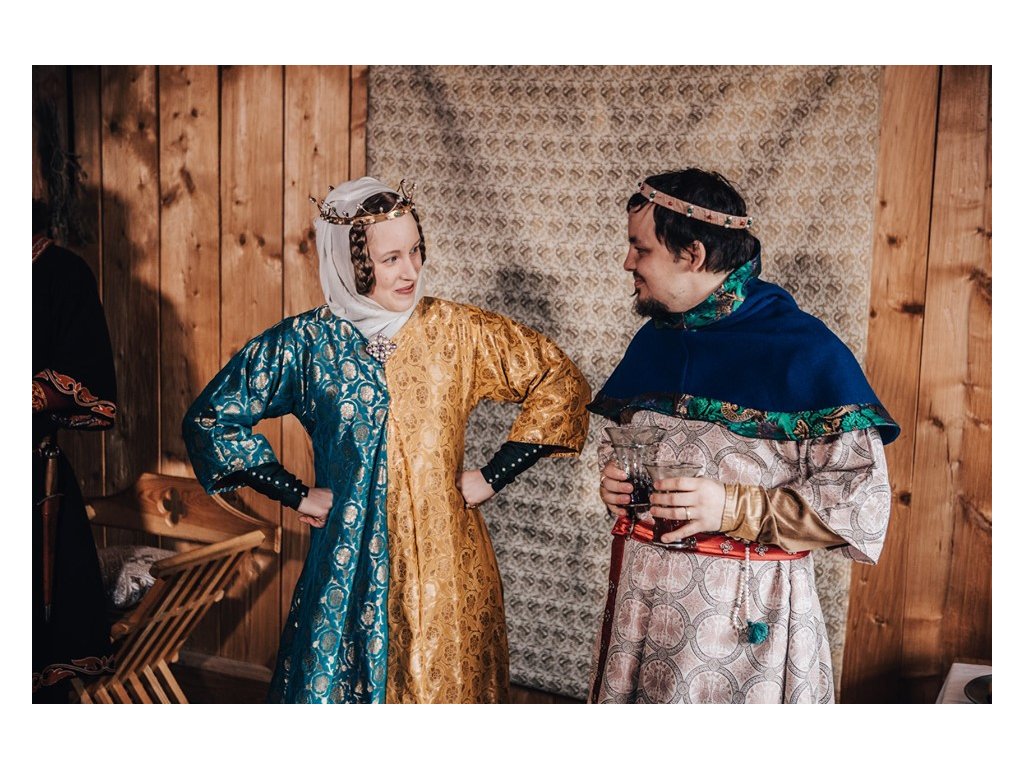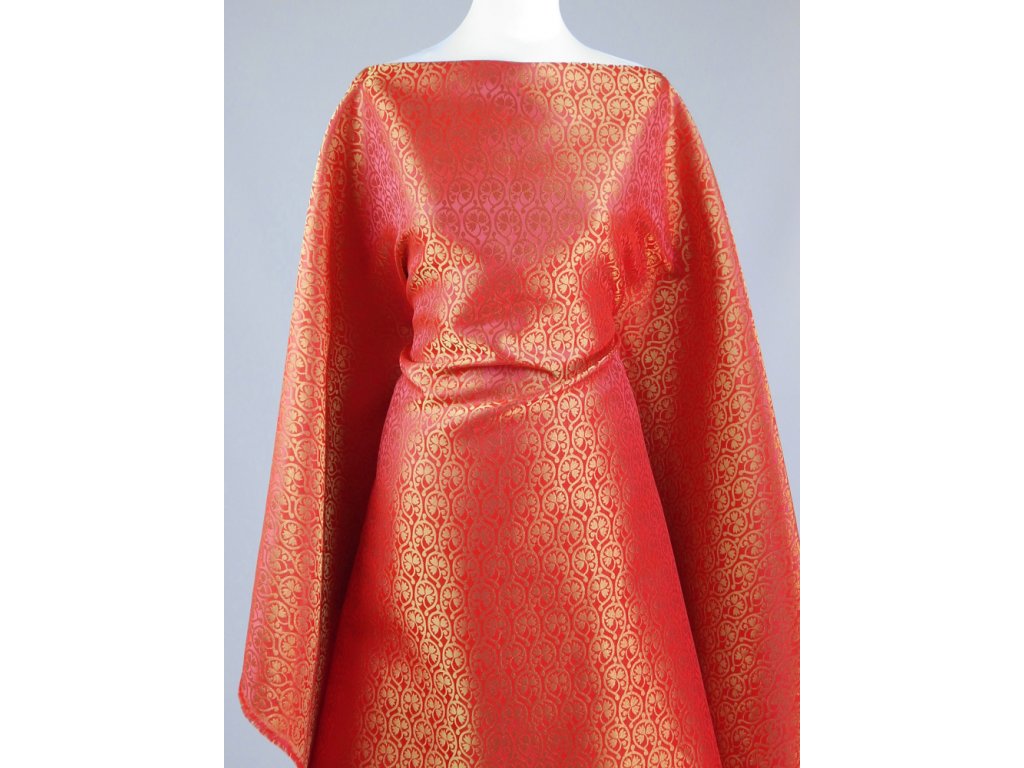Enter the world of historical brocades and explore a rich textile tradition. Revive the past with our historical brocades – every pattern, every thread tells a captivating story. While we may not sew finished garments, we provide you with a key element to create a unique attire. Your vision, our brocades!
In the article, we showcase samples of these rare fabrics, but we also bring you unique texts about the motifs that reveal the symbolism and inspiration behind each design.
The Celts
A distinctive feature of Celtic attire was the richness and complexity of patterns that not only emphasized unique aesthetics but also carried deep symbolic meanings connected to nature, mysticism, and tribal identity. Celtic clothing consisted of layers, often including elaborate cloaks, dresses, and tunics. Fabrics were adorned with intricate embroidery and patterns that reflected Celtic beliefs, connection to nature, and protection from malevolent forces. Additionally, the use of fine brocades and silk was popular, emphasizing the wealth and status of the wearer.
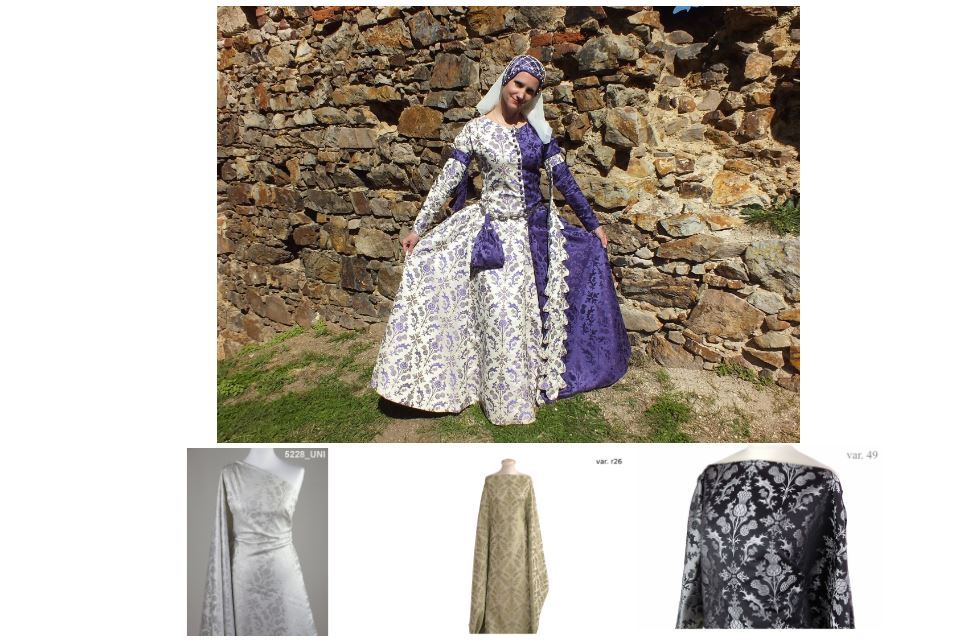
The thistle is a symbol of Scotland and its people. Although there is a compelling legend about why it became the national flower of the Scots, the true reason remains unknown. Allegedly, a Norseman stepped on a thistle in 1263, revealing a Norwegian ambush and leading to the Scots' decisive victory at the Battle of Largs. The thistle has been used as a national symbol since at least the 15th century, appearing on silver coins during the reign of King James III in 1470.
Byzantium
The Byzantine wardrobe was influenced by various cultures, including Roman, Persian, and Oriental, leading to the creation of a unique style of clothing. Emperors and members of the imperial family wore luxurious garments adorned with gemstones, pearls, and golden threads. Women wore richly embroidered dresses with long sleeves and vibrant colors. Wide tunics and cloaks were common elements of clothing for ordinary people, while spiritual distinction was expressed through the distinctive attire of priests and monks. Extraordinary emphasis was placed on fabrics and colors, with silk, brocades, and various types of bold textiles being popular choices.
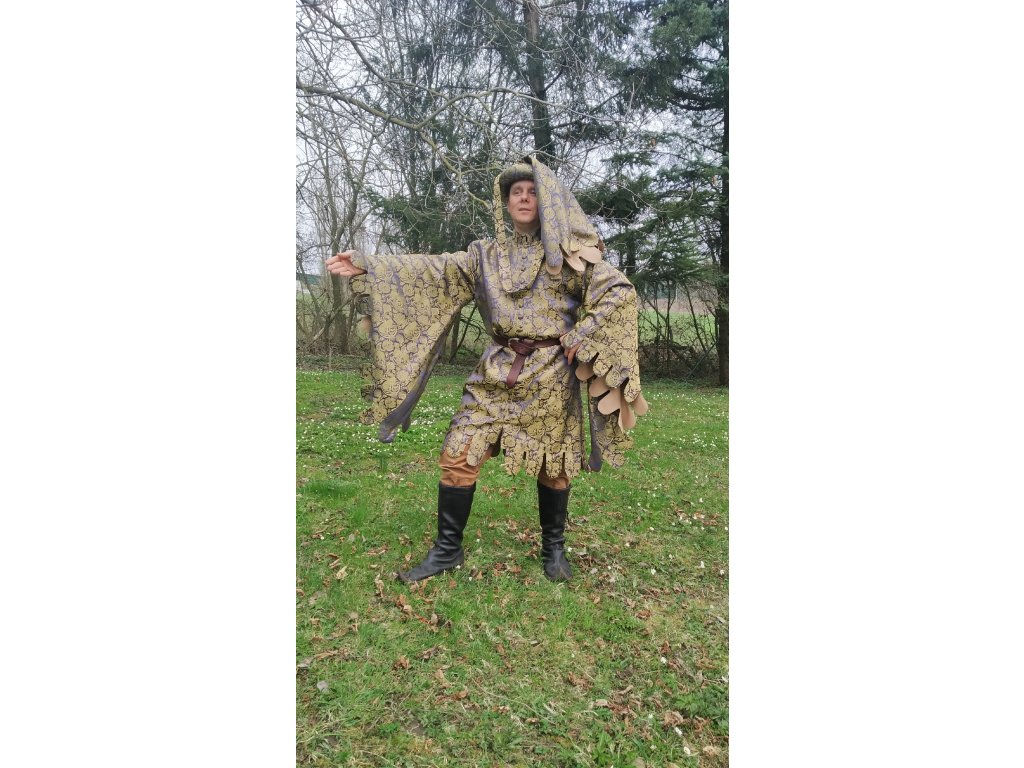 |
|
Dog & Thistle - a brocade motive that is excellently suited for sewing your period costume. This pattern was designed based on an original template, allowing us to weave a replica of Italian brocade from the 14th century from the Sicily region. The dog is a symbol of loyalty and devotion, while the thistle is a characteristic sign of resilience and defense. The original fabric - here |
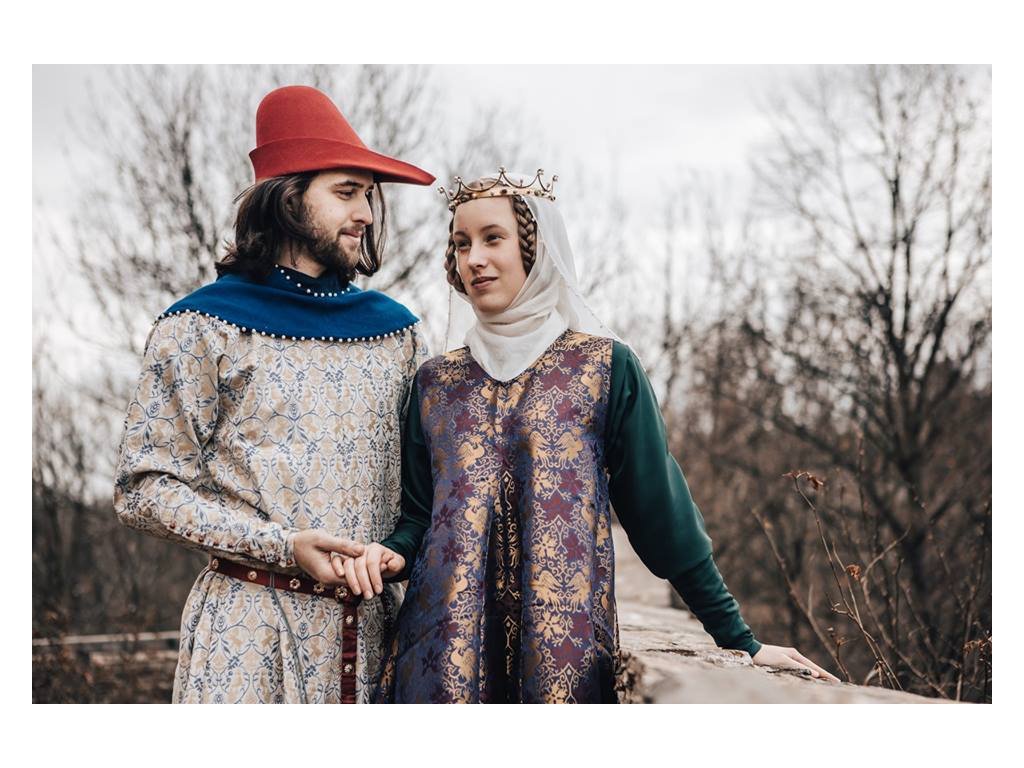 |
Eagle & Leopard - historical brocade with this motif is suitable for sewing period costumes. Replica of the original 14th-century brocade from the Italian region of Sicily. These patterns were highly sought after throughout Europe, primarily because these brocades featured woven metallic threads. Italy was a powerhouse in silk weaving during the 14th century in Europe, producing exceptionally technically advanced silk fabrics. |
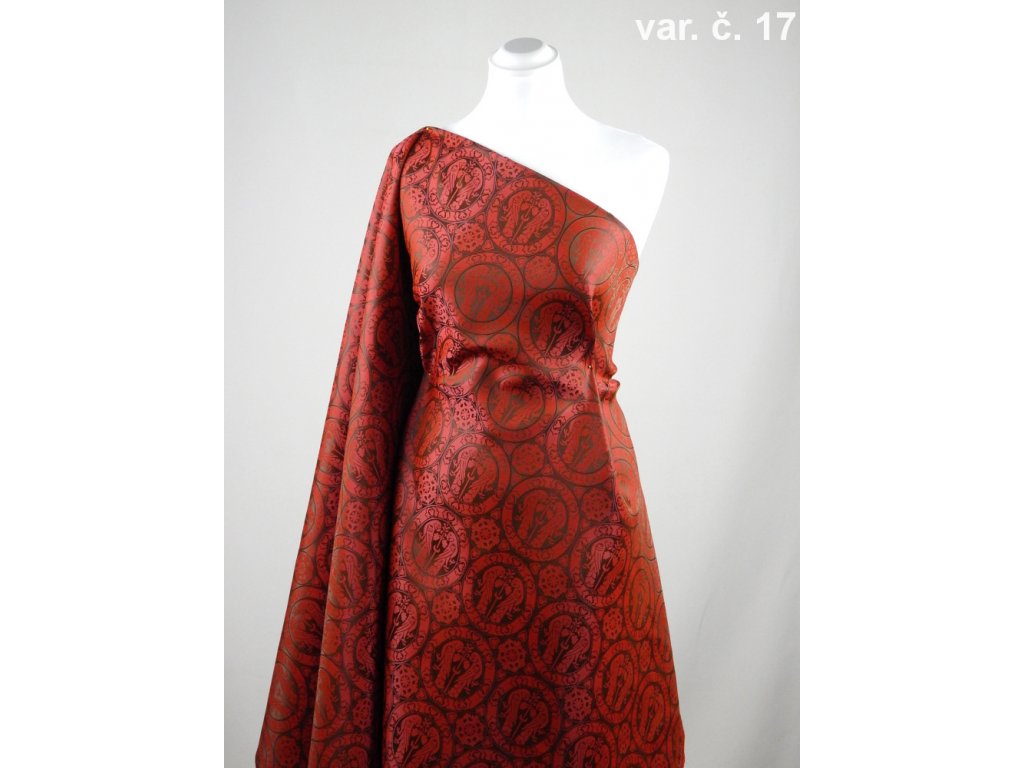 |
The first parrots to reach Europe (Greece) were likely brought by soldiers of Alexander the Great, probably from India. Ancient Romans kept them in cages made of silver, ebony, and tortoiseshell. They were trained to proclaim the glory of the emperor, and the price of a trained bird exceeded the cost of a slave. After the fall of Rome, we have no records of parrots until the Middle Ages when participants in the Crusades brought parrots to Europe again to cheer up grieving ladies awaiting the return of their knights. Portraits of noblewomen from that time convincingly attest to this. |
The Middle Ages
In the Middle Ages, clothing became a significant element of social structure and expression of cultural identity. Medieval clothing was influenced by various factors, including social status, occupation, and period. A wide range of clothing styles reveals the diversity of medieval society.
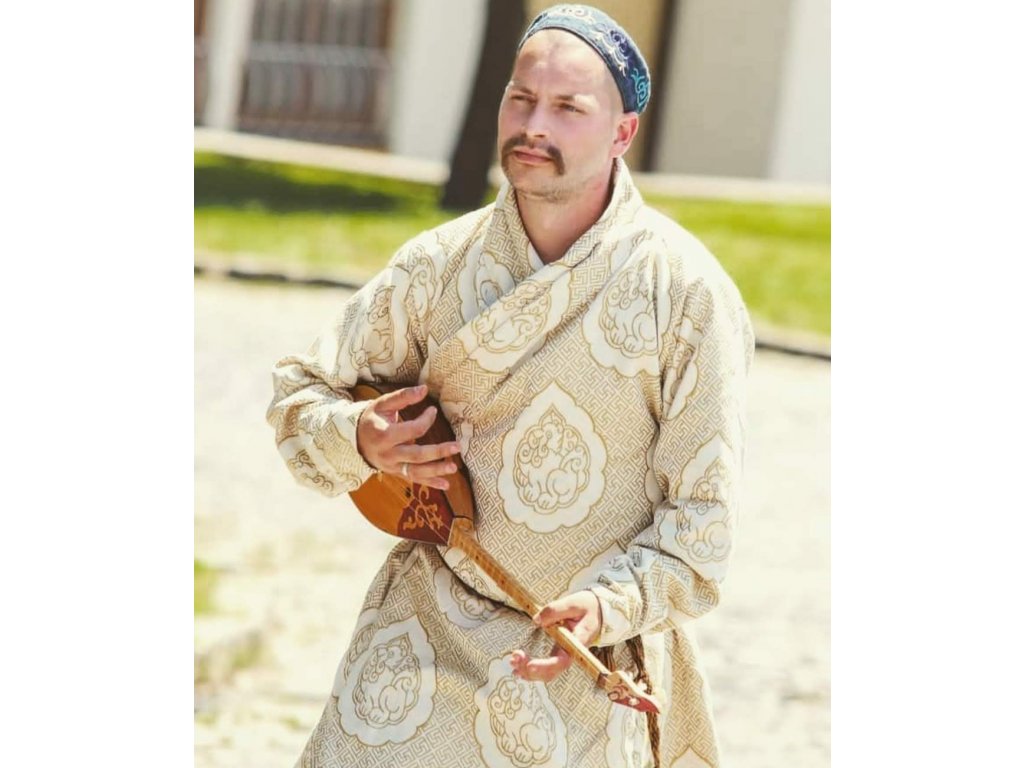 |
Lion - this pattern was obtained from a private collection in Denmark. Based on its stylization, it likely originates from the Mongol Yuan Dynasty, categorized in the 13th and 14th centuries. This motif is more likely to come from the Ilkhanate region (within the Mongol Empire). |
 |
Chintamani - The pattern of three dots arranged in an equilateral triangle, known as the "Chintamani," was a highly popular decorative motive across Europe and Asia. The first documented occurrences of the pattern in Europe date back to the ancient Etruscans in the 7th century BCE. It persisted in ancient Rome and the Frankish Empire until the high Middle Ages. It is no wonder that we encounter it in the territory of Spain at the turn of the 13th and 14th centuries.
In manuscript pages, it usually adorns the clothing of prominent figures but is also used as a background motif. It can be found on sculptures and wall paintings. Julianna Lees has compiled an exhaustive work on this pattern.
|
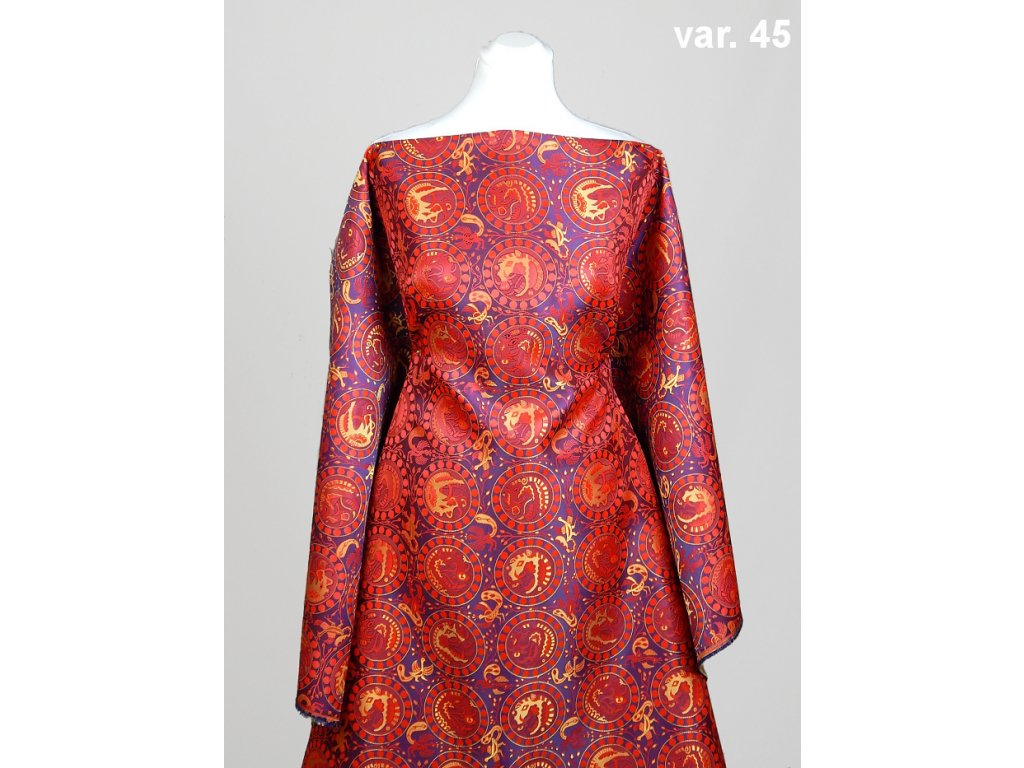 |
Wild Boars - the depiction of boar heads set into pearl rondels was an important protective symbol popular in the local culture in the 7th century, particularly in the regions of present-day Iran, Afghanistan, and further in Central Asia. Thanks to the preserved textile, we were able to weave a replica. Wild boars are the oldest pattern in our range |
10th century
National and regional cultures played a crucial role in the development of fashion during this time, leading to a diversity of clothing styles and traditions. Overall, it can be said that the attire in the 10th century was a reflection of the social, cultural, and historical influences of that era.
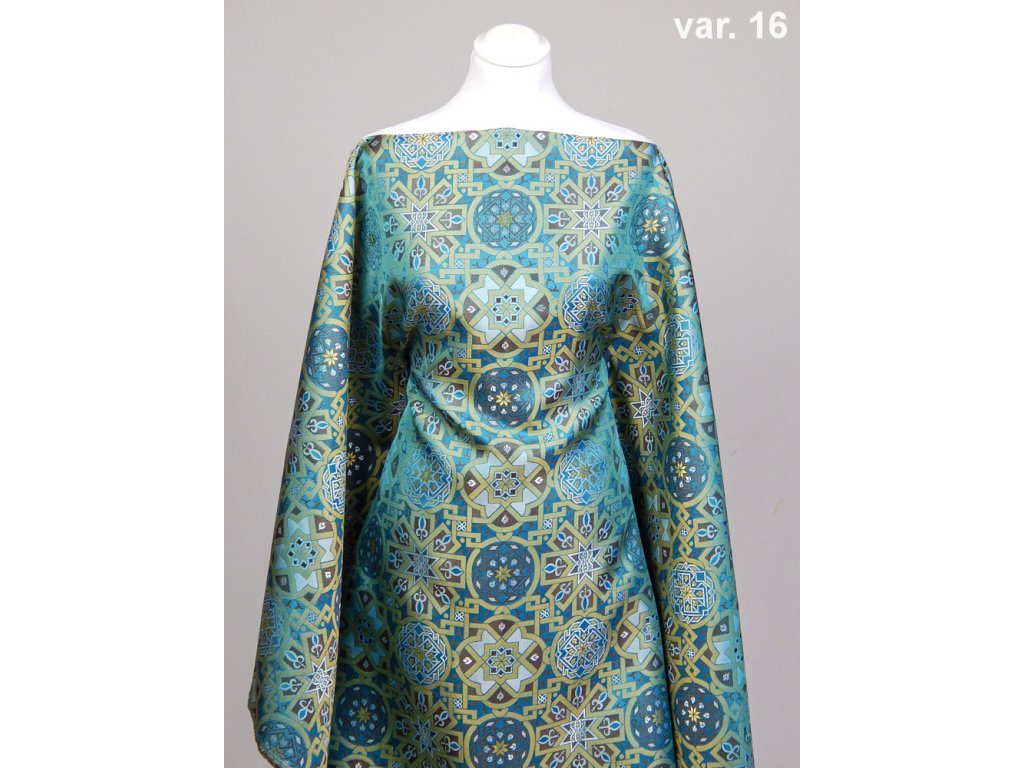 |
Granada - this pattern is formed by an eight-pointed star, a quatrefoil, and two circular ornaments. Textiles with this type of geometric interlacing were mainly produced in the southern part of present-day Spain and in north Africa. This pattern was specifically made in the 14th century, likely in the city of Granada, which was the capital of the Muslim Nasrid dynasty. You will find inspiration here. |

